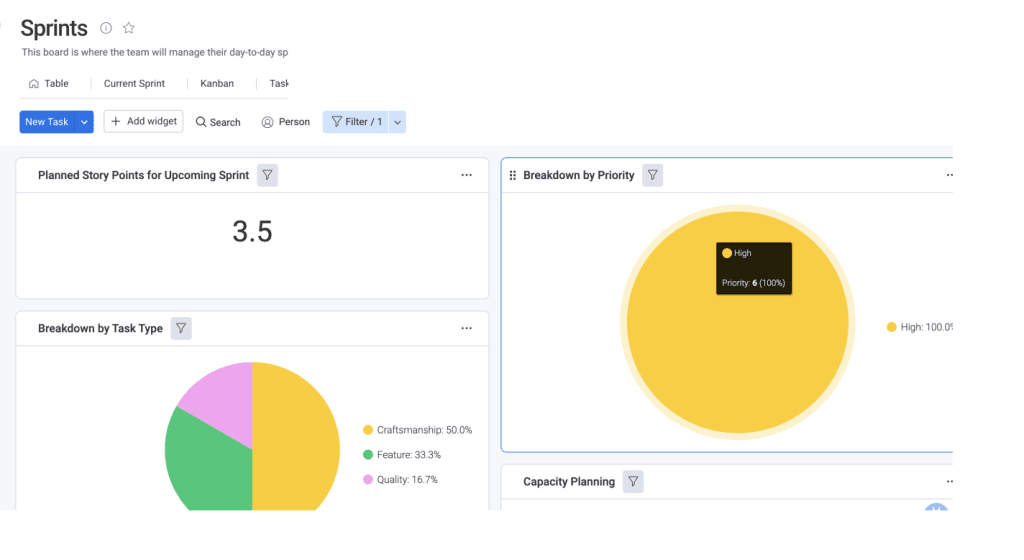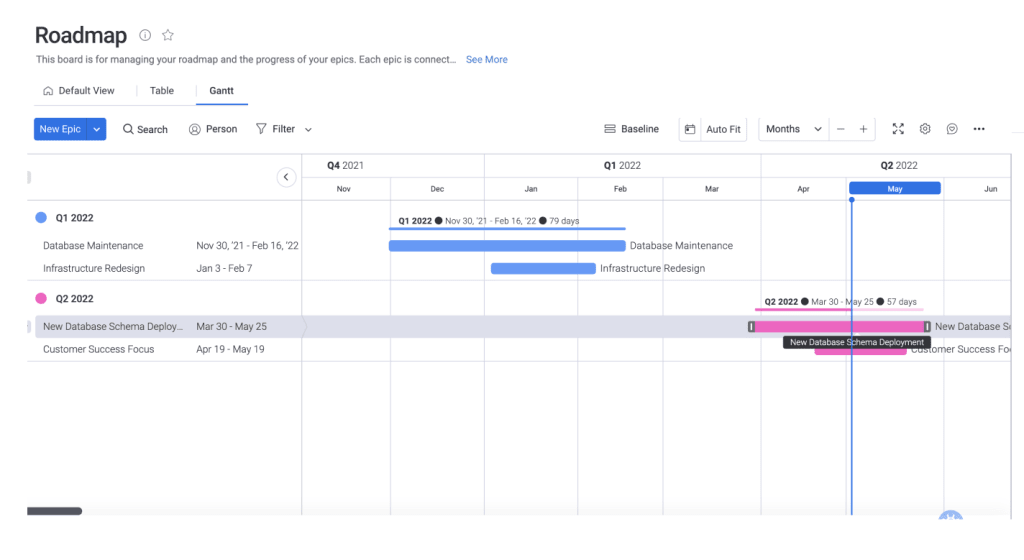A fully-customized review of systems template helps increase productivity and efficiency when working on new software projects or updates.
A robust system review template helps software engineers visualize the process, remove redundant work, and focus on the primary objective.
This article will explain how a systems template can simplify software development life cycles and adjustable to project and business requirements changes. We’ll also share a review of systems template to get started managing system reviews and software development on monday.com.
What is a review of systems template?
A review of systems template helps record and manage the critical steps of the software development life cycle, including:
- Planning
- Analysis
- Design
- Deployment
- Testing
- Maintenance
This template acts as a concise workflow, providing teams with insights on how they work best and where productivity could be improved. As with a standard operating procedure, reviewing the systems template makes onboarding additional team members a straightforward task. Bring top talent to the team with confidence they can seamlessly jump on any development project.
A review of systems template outlines every phase of software development to keep teams on track from start to finish.
Companies of any size can reap the benefits of these templates, whether creating software for consumers, other businesses, or in-house systems. In addition, the faster software is developed to the required specifications, the sooner teams can deliver the final product and start working on updates.
Why use a review of systems template?
A review of systems template is a vital part of the software development life cycle — categorize necessary tasks, assign team members to various jobs, and more.
The template minimizes the chance of missing vital features and details during software development — everything is accounted for within the template.
This of course depends on important factors and capabilities, like full customization and personalization of your review of systems template. Creating the document type that best addresses each team’s workflow or needs helps streamline efforts and reduce friction when integrating the template into any workflow. monday.com can help.
Review of systems template types
Choose a template type that best matches the development team’s preferences. Work from graphical representations, checklists, or even more than one template to meet the project needs.

1. Flowchart review of systems
A graphical review of systems template can be used for high-level discussion and tracking of software development. Using flowcharts or other images, this type of systems review template is ideal for meeting room talks about the development cycle of upcoming software projects.
2. Checklist review of systems
One of the most significant benefits of a review of systems template is it can be used to establish a separation of concerns. Adjust these based on each team member or on the skills needed to achieve the desired quality and efficiency. Every team has value, and it’s up to team leaders to ensure it gets put to use most productively.
3. Software development visualization
A review of systems template helps teams create documentation to enable a consistent pace and high quality of software development. Are junior developers or team members less familiar with the software development life cycle? Use this template to help them visualize and understand the process.
Quickly bring new talent up to speed with a visual-based review of systems template.Our review of systems template makes customization easy while maintaining the framework necessary to create and manage consistent software development processes.
Optimize development workflow with a review of systems template from monday.com
Provide teams with confidence during every step of software development. monday.com’s Work OS so teams can tailor each template to the group’s specifications. First, discuss which aspects of the development cycle cause delays and work out solutions for current and future projects. Then, make those solutions part of your workflow to create consistent approaches to improve time-to-market, cost, and other metrics associated with software development.
Take advantage of automations to reduce repetitive tasks, such as assigning new work once a task is complete. For instance, a team working on the software interface may split the task between different screens. Once one screen’s interface is complete, a new one can be instantly assigned for added efficiency.
monday.com takes templates a step further, offering multiple resources for the software development process.
Related templates to review of systems templates
Supporting documentation and additional templates will help teams navigate projects through to completion.

Start with a few of the various monday.com templates below:
1. Software development template
Our Software Development Template supports teams using the systems review template by helping them drill down to more detailed parts of each project. In addition, adding graphics and other visual tools makes changes easy to understand and track, ensuring teams can more easily analyze data surrounding each software development life cycle.
2. Software updates template
Our Software Updates Template helps teams organize future updates and deployments after the initial software launch. An updated template helps bridge the communication gap between clients and developers by outlining the expected changes and features and what to anticipate from each step.
3. Kanban software development template
Our Kanban Software Development Template lets you keep track of the team’s progress and assign new tasks with a prioritized backlog. A committed planning board shows which team or team member is assigned to a specific task, making it easy for leadership to understand how resources are used and whether any changes may be necessary.
Getting started with these templates can be the simplest way to get a development team going. It can be hard to decide what to include in your review of systems templates even with this information.
Here are some common questions, answered.
FAQs about review of systems templates
What should be included in a review of systems?
An effective review of systems template includes much more than a checklist of tasks. Provide teams with a clear path to completion that applies to every software development project. Visually present the steps of your software development life cycle and how each team member helps achieve the end goal — cover why the included steps are beneficial and how they create value for those completing the work.
What should a systems review do?
A systems review should help team leaders observe how the company approaches software development. It should be universally understood with clear objectives that team members can follow even if they join partway through the project. A complete review of systems template can help accomplish this before your next leg of development begins.
What are the three main types of a review of systems?
The three main types of a review of systems are:
- Problem pertinent
- Extended
- Complete
Perfect your software development life cycle with monday.com
Software development typically involves a lot of tasks. A good review of systems template can help manage many of those tasks.Create the ideal workflow with monday.com’s free review of systems template and provide the development team with the support they deserve.

